With all the talk about ancillary airline fees, picking seats on flights to Hawaii, paying for an exit row, aisle, and window seat, and upgrades and the like, we were reminded by your comments of the reality that choosing the safest seat on an airplane may be a lifesaver. Then you’ll recall that last year, there was the United 777 engine fire incident en route to Hawaii, which thankfully ended uneventfully.
Avid BOH commenter and personal friend Colleen just said: “Another suggestion for less stress. We choose seats a bit further back in the plane (safer, even in event of a disaster), and then just relax once we land and let everyone else get off first.”
Delta Flight 191: Tragedy Revisited.


Beat of Hawaii’s friend and former co-worker, Jean Hancock (sister of Herbie), died on Delta Flight 191 when it crashed on landing at DFW. It will have been 37 years tomorrow that it occurred. Jean died far too young at age 41. It’s something that’s always haunted both of us. She was returning from visiting family in Florida, and as a very frequent flyer, had been upgraded to first class. On approach to landing, the plane crashed due to extreme microburst wind shear in a storm. NTSB said the accident was a result of the crew’s decision to fly through the thunderstorm, lack of procedures to avoid and escape microbursts, and lack of wind shear information. Most of the 27 survivors of Flight 191 were located in the plane’s rear section, which broke free from the main fuselage before the aircraft hit a water tank. Based on this accident, NASA developed technology that detects wind shear and microburst conditions In 1994, wind shear detection was installed and became mandatory on aircraft.
“In 11 of the 20 crashes, rear passengers clearly fared better. Only five accidents favored those sitting forward.”
Flight number 191 appears to be cursed.
To date, three flights in addition to the one above, all numbered 191, have crashed. That should pretty much put an end to any airline using that flight number.
The first crash was Prinair and that crash took place in 1972 in Puerto Rico. The aircraft stalled and crashed on the runway following a missed approach.
Then in 1979, an American DC-10 heading from Chicago to Los Angeles crashed immediately after take-off when the left engine separated from the aircraft. All 271 onboard and two people on the ground were killed. Following that crash, DC-10 aircraft suffered from reputation impairment.
Next came the Delta incident above. It was followed by another Delta flight. This one took place in 2006 when a Delta Connection operated at Comair Flight 191, from Lexington to Atlanta, crashed on takeoff, killing 49 of the 50 onboard. The pilots had accidentally used the wrong runway which was not long enough for departure. The cause was deemed multiple pilot errors. There were also poor markings on the runway.
Some Data Suggests Rear Seating Is Safest Seat on Airplane.
Reports on safety data that we’ve read have been somewhat conflicting. However, one study that looked at 36 years of crash data indicated that the further back in the plane you sit, the safer you are.
And according to the Time article Colleen quoted above, sitting in a middle seat of all things, located in the rear third of the plane, is safest. Those have the lowest fatality rate compared with a window or aisle seat.
Consistent Advice: Sit Near An Exit Row.
Other advice we’ve heard within the industry, have read widely, and try to follow suggests that you’re safer if you sit on the aisle close to an exit row. So if you’re paying for an exit row, you might just be safest if you choose one near the rear of the plane. Unfortunately, it’s typically quieter and less turbulent in the front, where planes tend to be more stable.
One Additional Thought: What To Wear For Safety
Two of the most important things you can do to improve safety on the plane are related to your clothes and your shoes. Experts say to avoid taking shoes off when boarding, as half of the airline incidents occur during take-off and landing. Some believe that shoes-on should be mandatory.
Also, consider wearing clothes made of non-flammable materials. Jeans are considered a top pick.
Please add Your Thoughts.
Do you think about your safety when choosing an airline seat? And do you choose to pay for an exit row at least partly for that reason?
Get Breaking Hawaii Travel News
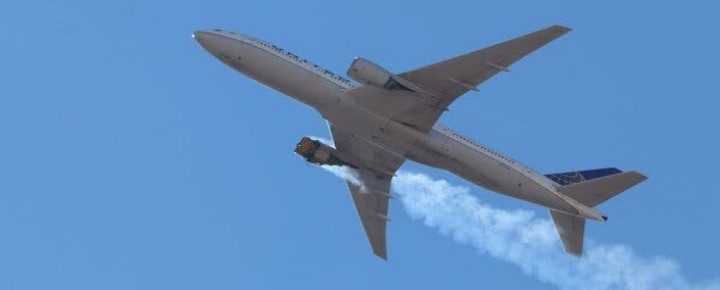
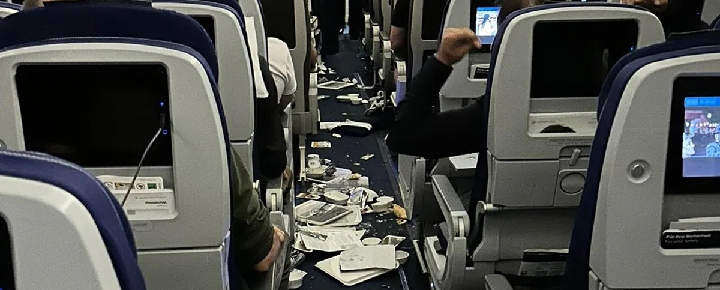
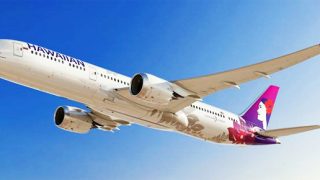
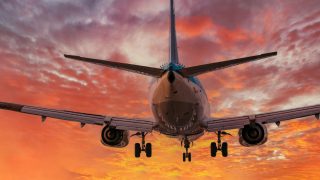
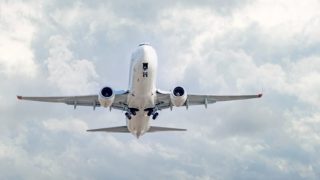
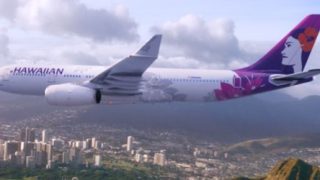
Greate topic. Thanks.
I would suggest not talking too much about rear seating. The airlines may notice and start charging extra for those seats.
I always sit in the rear section if possible. It just seems less claustrophobic to me.
Hi Mike.
Thanks. Interesting how different people approach seating. We both prefer near the front since you don’t notice all the people behind you.
Aloha.
Would be nice if aero industry would produce planes that have FC in the rear!
I just googled “odds of dying in a plane crash” and I got results varying from 1 in 11,000,000 to 1 in 30,000,000. With odds as minuscule as that, I’m going to just take my chances, pick whatever seat I like that’s still available, and not worry about the safety that may or may not be associated with that particular seat. I’ve got enough things to worry about without adding this to the mix!
Aloha! I used to be a flight attendant and the only advice one needs is read the information in the seat pocket, know you’re exits, do what the flight attendants say. The best advice of all is leave your belongings behind. You can’t believe how many people I saw get delayed in evacuations because they were looking for the purse and carry on. Your seat number won’t mean a thing if you are hunting for a bag of pineapples while the plane is burning.
Hi Joan.
We never knew that about you. Which airline?
Aloha.
Safety: Flight attendant from United 232 that crashed in Sioux City became an advocate for safety. In a video interview on the topic of surviving a crash, her #1 priority was for the passenger to know where the exits are from they are seated; this being more of a priority than where you are seated. Know the exit locations in front of you and back of you. Be ready to count seatbacks, etc. In another interview I saw with this person years ago, she was an advocated of car safety seats being required for children following rules for cars. Her United 232 was a “family” promotion flight with children flying for a dollar and MANY lap riders. Her observation that there’s no way you can hold a child during a crash and her description of mothers trying to find their babies after the crash in Sioux City. I also recall she said that during take-off and landing, the lapbelt should be as tight as you can make it.
Great tips! Years ago I read you should always count how many rows away you are seated from the exit door in front of you and the exit door behind you in case there is smoke or other circumstances that do not allow you to see the floor lights when leaving the plane. Many other passengers must have also read this tip because even though I’m not counting out loud, fellow passengers comment “We see you are mentally counting the rows to the exits”.
Could the stats favor the middle seat near the rear of the plane because they are the seats most likely to be unfilled?
Thanks for the reminder about wearing seat belts FASTENED. One can really be thrown about in turbulence causing minor injuries and vacation discomfort. Also, I recently read in this era of germ consciousness, it’s a good idea to board late and take a window seat. You have less exposure to folks passing in the aisle.
Since the probability of a crash is very low if I can get first class I’ll go for it. Seat space has gotten smaller and the seats are much harder in coach. I am 5’11” and my husband is 6’3″ and our shoulders overlap each other so we have to take turns who’s under and who’s over. We don’t get it very often so we usually get the “extra comfort” seats and they are near the front of the plane. I do always wear comfortable shoes and cotton fabrics. Nothing synthetic due to fire in the case of a crash. I can’t believe how many people take off their shoes AND socks. No class or consideration for other passengers IMHO. We are finally going back to Maui in the Fall and I can’t wait!
Great topic guys!
I have never given much thought to where the safest area on a plane is
I am happy that smoking on a plane was banned a while ago.
I never saw the wisdom of lighting anything on fire, especially in your face, but on top of thousands of gallons of jet fuel was shear insanity!
I honestly feel that the very front of the plane is best for me.
If there’s going to be a crash, I’d like to go out with the heros in the cockpit. I’d rather not be part of the fire that may come later.
Blessings to Beat of Hawai’i.
Mahalo and stay safe guys. I couldn’t do without you 🌺
Hi Pam.
Thanks for everything. We both concur about preferring the front. And that was where Jean was when she died. She probably wouldn’t have changed where she sat even if she knew about the inherent danger. She only flew up front.
Aloha.
It doesn’t matter to me if first class is in the front or the rear of the plane….
Hi Ed.
We’re smiling.
Aloha.
I almost always get seats in the rear of the plane for safety reasons. The noise doesn’t bother us because we usually have headphones on.
No matter what we can’t control what may not happen. I try not to worry but the thoughtless cross my mind.
Sorry for the loss of your friend and family member.
My mom worked for the F.A.A. for many years and always advised me to sit at the back of a plane due to better odds of making it through a survivable crash and I take her advice the majority of the time for that reason.
I absolutely always consider safety and worst case scenario when choosing my airline seat.
As I studied aviation in graduate school in the 80’s, we read many accident studies and actually analyzed the data from a number of aviation accidents. One of the problems with aviation data is that the data is sparse (not many accidents) and lumpy (they don’t happen a regular time intervals). Then, we have to look at an even smaller subset of “survivable” accidents (many accidents are sadly not survivable). All of this makes it hard to make any conclusive findings from airline accident data.
This is so odd. I was looking up some info on one of Herbie’s
albums, saw one of the tunes was co-written by Jean – – I knew she had worked on some early lyrics. Googling their names together so see how many they collaborated on I ended up on a site about the plane crash.
Jean and I were close friends in grammar school (the Lab School in Chicago), and later after I moved to Boston. All I had known/ read about the crash was wind shear. It is painful to absorb the details I’ve just read. I guess I’m writing to you because I am grateful to see this blog entry by someone who shares this loss of a friend.
I used to see Herbie every couple of years when he played in the Boston area and we’d chat a bit. But it has been a while now.
Statistics can \spin\ information in interesting ways. While it may \statistically\ suggest that sitting in the rear of a plane relates to a better survival rate… I must fly for my work and spend 85% of my work week traveling so the \value\ of the survivability means almost nothing.
Given how few planes crash, I would rather spend my countless hours in the more stable, more comfortable, less noisy and certainly time saving (at least 30 minutes boarding and 30 minutes disembarking saved each flight) front of the plane -and not not pay extra to do so. I would rather live a full life in (relative) comfort than subject myself to freezing, deafening, non-reclining hours of torture hoping that my seat choice would give me better odds of surviving a plane crash where others would not -thank you.
Amen!!!
Very sad when anyone’s life is cut short especially when traveling in the Safest mode of travel. I have known of this and usually sit from the wing back in the plane. Also because we go to see the grand kids and of course our kids that live in Hawaii. this is maybe also I am cheap so I get the least expensive seat and fly non stop.
Well, like a famous comedian once said…”you ever hear of an airplane *BACKING* into a mountain!
I am sorry for your loss and yes, I do think about our safety when we fly. Often the thought crosses my mind ” What am I doing flying 35,000 feet in the air?”
We have only flown first class once when we were bumped and subsequently upgraded – so, we always sit further back. We rarely pay for an exit row but do prefer to sit on two aisle seats across from each other.
There is a scripture that says that ‘time and unforeseen occurrence befall us all.’ Accidents happen. I believe accidents are just that – nothing more.
There are a lot of things that influence survival. Seating preference ‘might’ just be one of them. But it isn’t a guarantee.
We are at the mercy of circumstances – many beyond our control. We cannot control pilot error, mechanical error, weather and more.
We weigh the risks vs the benefits of flying – the same as we do driving a car vs walking. We hope for the best. I personally stay buckled up as much as possible.
Thanks for a thoughtful article. I don’t think anyone wants to dwell on the possibility of not making it to their destination. But those rear seats don’t sound nearly so bad after all.